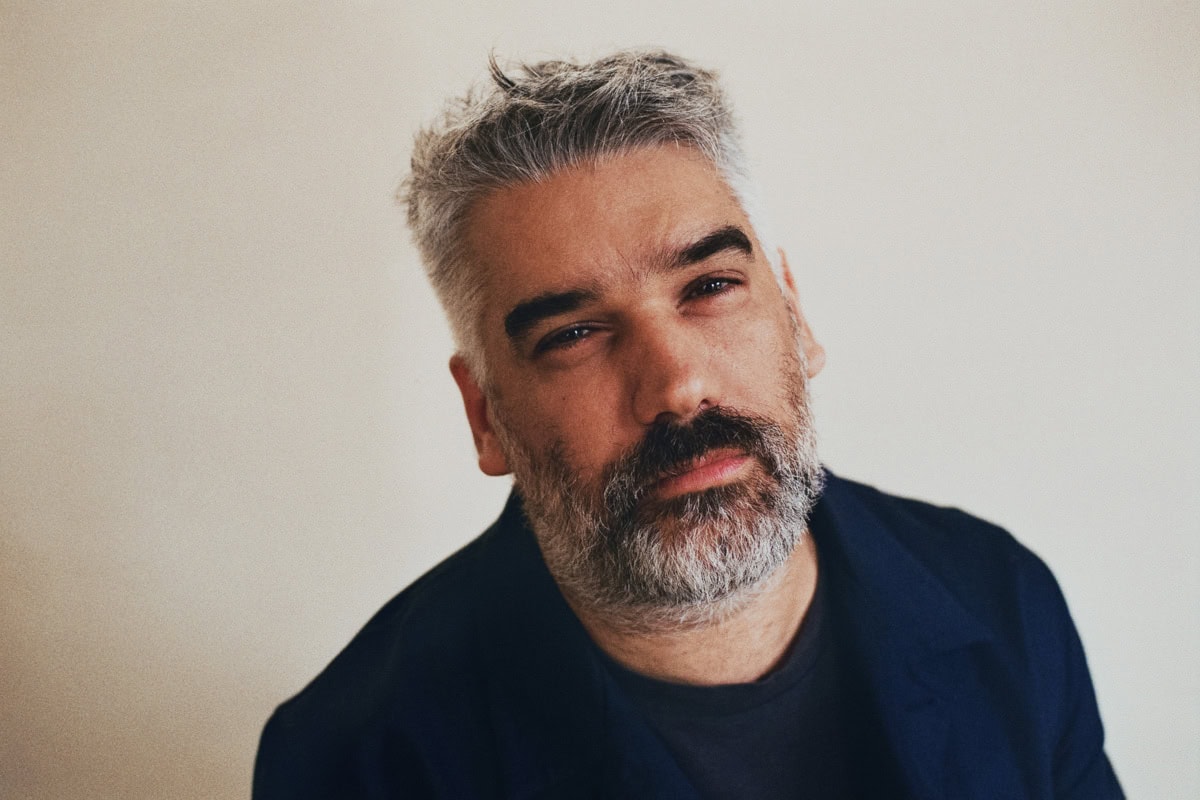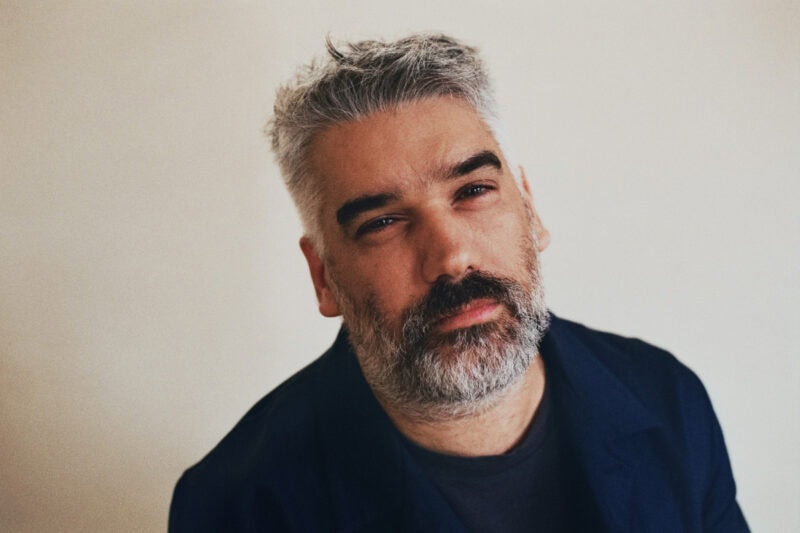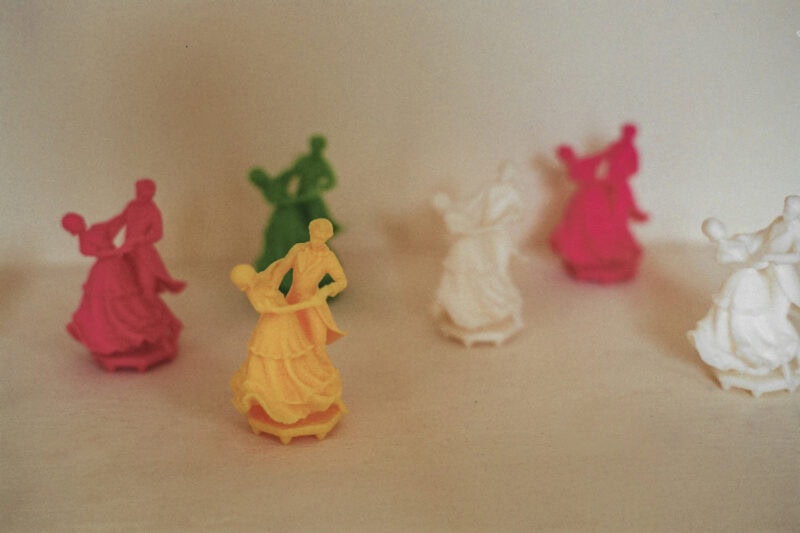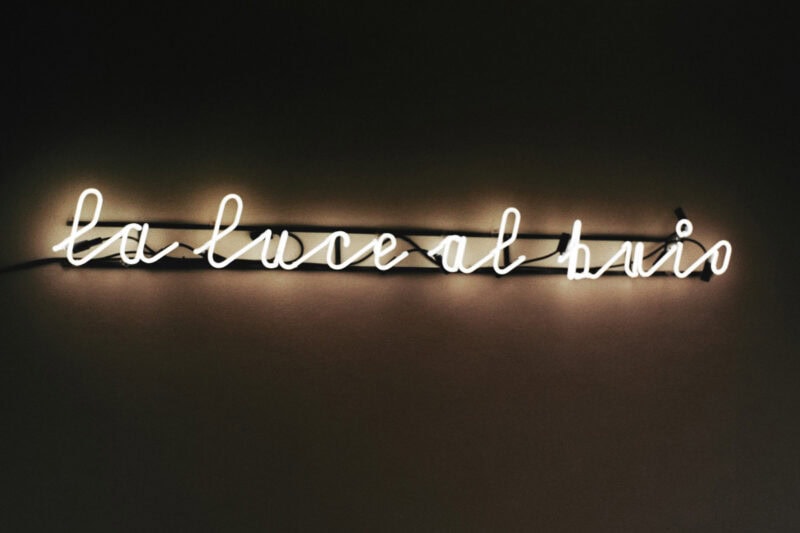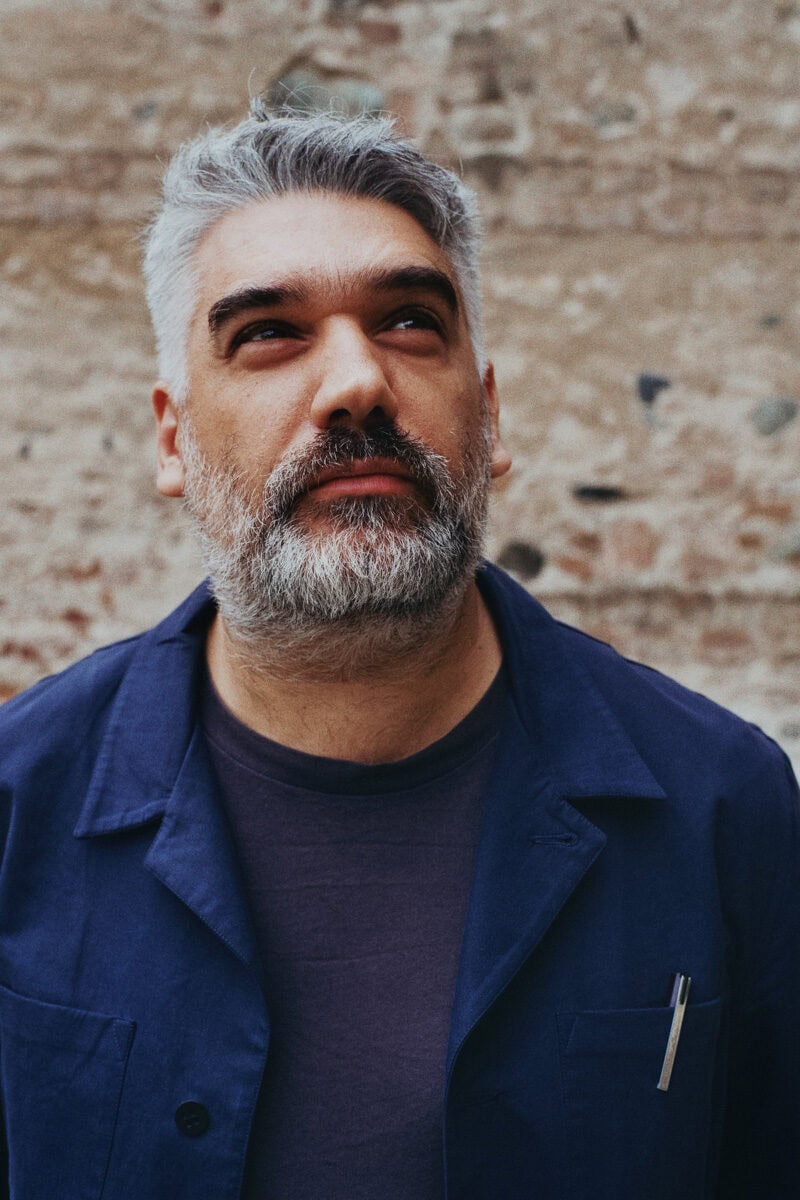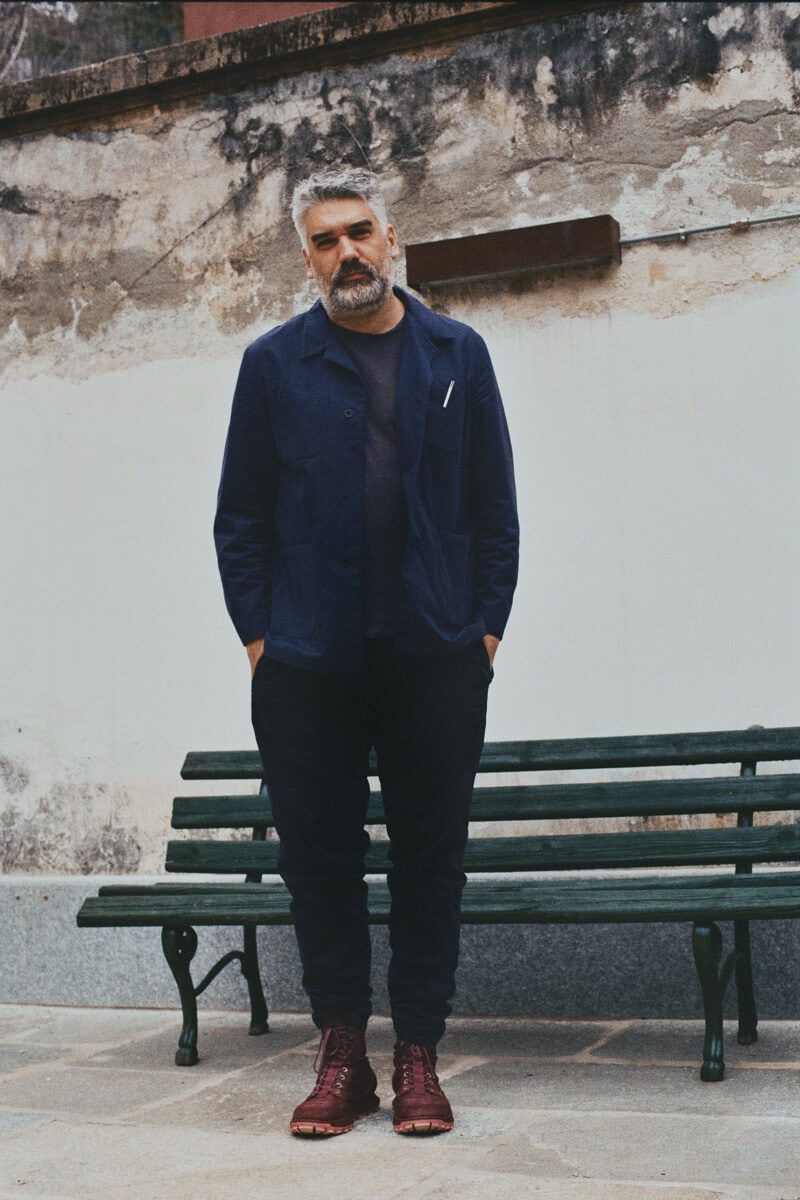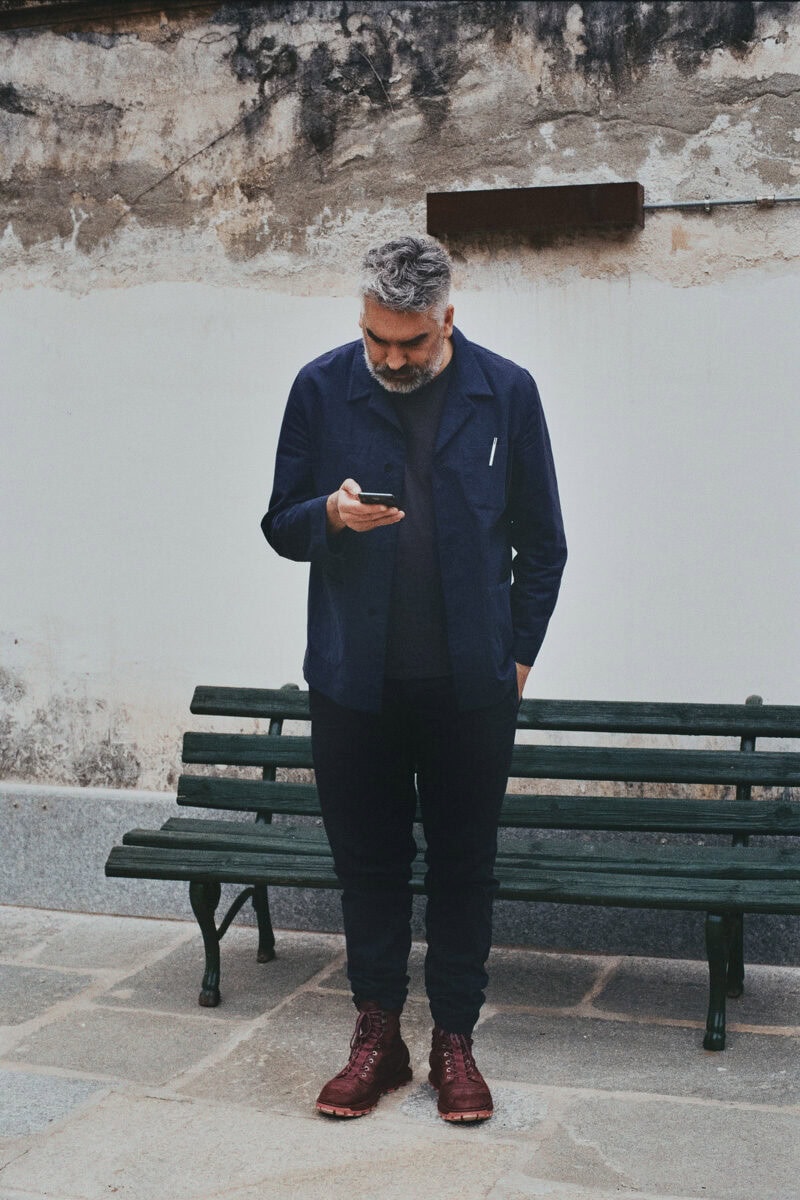Like so many others, I was lucky enough to see Aphex Twin perform at Club To Club in Turin two years ago. I consider it the pinnacle of my concert-going carer, something that I truly understood the significance of not days later when I had metabolised the event, as is usually the case, but in the moment. Aphex Twin, a true totem for all lovers of a certain genre, was more than a headliner that year: he was the cornerstone of the entire festival. I remember feeling great admiration for the organisational machine behind a moment of such magnitude, which is why I welcomed C41’s invitation to have a chat with Club To Club creator and promoter Sergio Ricciardone. Sergio is one of those music professionals with a profound and far-sighted vision, and what he has built with his festival over twenty years makes that very clear. Our conversation only further confirmed this and gave us a chance to discuss many aspects of the present and – above all – future of music.
I suppose we should start by addressing the current situation. How has all this affected the festival and your work?
I basically found myself doing crisis management overnight. Everything that had been planned and organised was scrapped in the space of a few weeks. We were well ahead with organisation for the festival, in terms of planning and locations; in fact, we were well ahead on lots of other projects too. There was something else to it all too, which I think was the case for a lot of people: we found out just how very fragile we are. In just a few weeks, we had to cancel all the projects we had on so I had a double role, because not only am I artistic director of the festival, I also handle crisis management, which is necessary with a fairly complex structure like ours, with 12 employees and a whole series of different situations to manage. Initially during the lockdown, we tried to work out whether there was any chance of salvaging the events but then at some point, towards Easter week, we realised that there was no hope of things going as planned and we were going to have to completely overhaul the whole year. So, we decided to take 2020 as it comes, and hope things are back to normal in 2021. This will be a year of research for us, a time to think about what new rules we can apply to the way we plan things once we have overcome this situation. So first there was the cancelling everything part and then we decided to plan not for this year but for the next.
During lockdown, you produced a series of excellent daily playlists as well as special initiative Brand New Day at the OGR. Can you tell me a bit about it?
First of all, we decided that we should maintain a very light-hearted tone of voice during the pandemic, even when things got really tough. We didn’t want to be too shouty with our communication but collaborated with friends and international artists to release the daily playlists. It was them giving us what they would usually give at events. We didn’t want to do any more than that, we didn’t want to stream anything because we don’t believe that streaming is the right tool for people to have an experience with. What we did at the OGR on 25 June was a stream with no audience and we chose the location specifically because the last event we held was at the OGR on 22 February. Then the crisis broke out on 24 February. We wanted to start over from the last location that we had held a real event with people present. Unfortunately, the OGR isn’t currently available for events because it has become a temporary hospital and there is some debate about whether it will remain a hospital after the pandemic. The stance that the OGR is taking is that Turin desperately needs cultural locations and event spaces so that things can start afresh, which I fully agree with. For Brand New Day, we asked a series of artists who we respect to create sets specifically to be played at the OGR in the other wing. We worked with Italian artists, and this will be an important aspect in our new plans. It was an experiment that was needed to say, “we are here” and we need the OGR. These shows require large-scale production and a lot of people worked on them, so the goal was to guarantee quality as far as possible: quality music, quality production, and quality ideas.
That quality definitely came through. Your choice to slow it down a gear was in direct comparison to the mass of often amateur content churned out online in recent months. Your efforts and dedication to production are really appreciated, now more than ever.
Thank you. I don’t think there will be many other occasions for us to release a stream and nothing else. I think we’ll probably experiment in the autumn because as things stand right now, we know that 200 people will be able to participate in an event and so we’re thinking of putting on events which are then somehow amplified by streaming. This show was also a way to involve a series of people who haven’t had any work for the past few months, including the artists themselves. It was a way to offer work to people.
There is a lot of discussion about the fragility of the music sector at the moment, but I think we’re seeing that cities are fragile too and festivals by their very nature are linked to their locations. What are your thoughts on Turin? Do you think you will have a different relationship with the city in the future?
My answer is two-pronged. First, I’d like to quote an essay recently published by Einaudi which I thought was very interesting in terms of what has been happening in recent years. It’s called, Who stopped Turin, a Metaphor for Italy. Before Covid, Turin already had huge problems, in the sense that it was still struggling to create a narrative for itself which had a whole series of clear social implications. After an event like Covid, trends tend to become even more extreme, something that we will see in many cities, and there is a risk that Turin has some complicated years ahead. But something positive I have noticed is that there is a desire to build a new and different narrative. In these past few months, for example, there have been countless phone calls between different figures in the world of culture – music, cinema, literature, theatre, contemporary art – to see if we could build projects together. This has never happened before and I think it could provide the answer to the crisis, and the city’s problems. In my opinion, this is a fantastic opportunity for Turin in the sense that it is a city that has always struggled and is used to experimentation. At a time when other cities are struggling too, collaboration between a series of different figures might allow for new and innovative projects to emerge and there really is an urgent need for that right now.
One of the themes I want to touch on in this interview is the “new renaissance”, the idea that before the current crisis, Italy was enjoying a hugely positive period from an artistic and musical point of view. At the same time, I think that Italy is a country perpetually threatened by nostalgia, where the prevailing mentality of “things aren’t as good as they used to be” can sometimes impede us from fully grasping how many interesting and exciting things are actually happening.
I completely agree and I would go as far as to say that, in my opinion, we have been and still are slaves to a political and mediatic narrative that does not respect the people who are working to bring us innovative cultural projects. Politically speaking, we need a miracle to dig us out of the current situation; it’s just a broken record at this point. We are in an economic downturn yet completely blind to any different ways of assessing things. It is absurd that we continue to think of GDP as the only valid measurement. There are extraordinary people doing interesting things in Italy. Some of them even decide not to leave – or to come back – and are creating very valid initiatives. I feel as though everything has been trivialised to such an extent that it has become easier to communicate mediocrity, rather than anything that would actually make a difference.
Nothing is more stigmatised than success in Italy, especially within art and culture.
It is as though we suffer from existential resentment, so we live in a society where being meritocratic is almost out of fashion and it’s better to talk about what doesn’t work. If you talk about something that does work, you are immediately labelled as somebody privileged who has had chances that others haven’t. Having said that, if you establish yourself as a coherent and credible interlocutor with an international network, it makes it easier to talk about all the positive things that are happening. Take Turin, for example, a city that was not particularly well placed in terms of positioning and international visibility. It was fairly unknown and certainly didn’t have any central role within the music scene. Today, however, in part thanks to Club To Club, Turin does have that central role. Any musician or insider from the scene will confirm that. Turin and Milan are even considered the same city nowadays. If an artist plays at Club To Club, they probably won’t play Milan, because Turin and Milan are only an hour apart by train.
Everything we see is filtered by the mediocrity of the Italian media (at least the more mainstream media) and embodies a certain narrative. If you saw it filtered through another lens, more able to recognise merit, it would take on a much more interesting configuration.
As a festival, you can consider yourself something of an observatory, which while not exhaustive, certainly has a wide-ranging and attentive vision. Musical boundaries have expanded in recent years with many interesting new and emerging scenes, such as everything that is arriving here from Africa, with labels like Gqom Oh! or festivals like NYEGE NYEGE. How do you compete against this growing abundance of stimuli?
Like other Italian entities, we deal with our international colleagues every day, so we are competing against the whole world. The programming and artistic research at these festivals has significantly increased in recent years. While there are many disadvantages, one of the advantages of globalisation is the opportunity to intercept transglobal phenomena that aren’t solely linked to the European or American scenes. It didn’t used to be that easy to contact artists from Asia, Africa or other parts of the world and they were often considered something exotic, which is actually racism.
I think that we have developed a deeper and more complex concept of otherness over time. We are no longer looking for the “exotic” but there is deep interest in anything different. And when I say “we”, I mean us Westerners and Europeans who have always placed ourselves at the centre of the universe. The internet has mixed things up for the better here; it has turned a spotlight onto scenes and talents that were previously beyond our field of vision.
There is more mobility today, thankfully. International artists perform in the suburbs of our cities and our “empire”. They take enlightening artistic directions. Every year we try to invite Italian artists who we like and who also have a more international vision and audience. We’ve had Liberato and Ghali recently but last year we struggled to identify an Italian rapper or trapper with the same level of international reach. So we decided to invite Issam instead, a trapper who is talking about changing Moroccan society in a much more interesting way than anyone else, in terms of both lyrics and production.
Let me just linger on Ghali and Liberato for a moment to reflect on the music press in Italy. If the newspapers had it their way, I could easily believe that Italy had stopped making music decades ago yet there is actually a lot of really fresh contemporary music being released. Take Liberato, for example, who makes the very best grown-up pop. And then there’s the industry press, which often snubs certain musical phenomena because it doesn’t fit in with so-called artistic authenticity.
The music journalism scene here is very small, it’s always the same people and they have to keep up with a thousand different artists – how can we blame them? But I think it is fair to say that journalism only seems to be interested in music when it’s the Sanremo Festival. However, I would make a distinction between Ghali and Liberato because while Ghali has opted for a more national career, Liberato has done exactly the opposite. He’s making videos with Del Naja from Massive Attack and Gaika, who also played at the festival. We are talking about artistic choices designed to speak to an international audience. In Italy, there is certainly no interest in talking about this. Liberato is an exception in some ways but take Nu Guinea. Naples is really seeing a musical and cultural renaissance right now. But there is no space for it elsewhere: music only sells when it’s all dressed up. In my opinion as a more international observer, the scene is totally saturated with rap and trap right now.
Speaking of trap, I imagine that your interest in it lies more with the sound and music rather than the aesthetics. Am I wrong in saying that production has to have something interesting to express?
No, not at all. I do respect Charlie Charles, who is one of the most important producers of rap and trap hits, very much. But the scene is lacking in certain reference points.
However, what we try to do as a festival is break down the barriers between musical genres and this is getting easier now since another problem of ours is that we were labelled as a purely electronic music festival for years. But when you actually attend, you realise just how many genres we represent and that the categories we have always used to define ourselves have been torn down, especially the boundaries between these categories. I think that the most interesting things happening from a musical and cultural point of view are all heading in this same direction. It is a bit like the discussion around gender equality or sexual orientation. Some things are now clearly non-binary, and this is reflected in music too. First and foremost because artists are people who see society and reflect it. The sun is setting on a more classical and binary way of thinking, which leaves us without a clear interpretation for everything we used to analyse from this perspective. The people that I think are doing the most interesting work right now are going in this direction.
Thinking about this fluidity in relation to the way that we experience music, it is clear that the new digital paradigm has really mixed things up. Simon Reynolds says it very well when talking about the effects of the Digital Empire: super abundance, speed, and breaking down of barriers both spatial and temporal. This has created a shrewder listener that is detached from “ancient” rituals such as the act of taking a vinyl out of its case, putting it on a turntable, returning to the sofa, and listening to an entire album.
Simon Reynolds also writes very well about another side effect that we have been seeing for several years now: the creation of a musical jumble, which makes it extremely difficult for new generations to grasp the chronology of musical phenomena. Our listening experience is already more disturbed because it is delivered from our phones or computers and is constantly interrupted by apps or other sounds and notifications. In some ways, this also compromises the listening of an album from start to finish. And I think we should reflect on this idea that there is no clear chronology of musical phenomena (unless you are really passionate about music). In my opinion, it will be vital in coming years not only to educate people how to listen, but also to help the audience at an event like C2C to reconstruct a musical phenomenology and chronology.
Very interesting. Reynolds has written some important things about our musical obsession with the past. I was impressed by a passage from Retromania in which he discusses the trend for music museums – there has been a boom in museum exhibitions about musical genres and artists. It is a theme that is very close to my heart because of my work but in my case, the Archivio Storico Ricordi collects widely historicised musical phenomena whereas what we are seeing in general is the compression of time, where very recent phenomena have already been metabolized and reworked through the lens of music criticism, historians and exhibition curators. I believe that club culture is also now going through this phase, as demonstrated by the beautiful ELECTRO exhibition, which starts from the first synthesizers and goes through to footwork.
Reynolds ends the book by saying that the spark of the future is missing from the musical phenomena he analysed. Or at least that it is very rare to find that spark in contemporary music, because of our attachment to the past. I don’t doubt Simon Reynolds, who is certainly a great music connoisseur. Some of the artists that we are most fond of as a festival represent the idea of a dystopian future and I do think that it’s easier to be dystopic than utopic right now. But that should be part of our mission in my opinion: to use the festival to make beauty something more urgent, not superfluous but necessary.
The choice of visuals for the next edition seems to be moving in this direction. What was behind your choice of a hunting landscape by Vittorio Amedeo Cignaroli – a landscape painter from Turin who was extremely popular with the House of Savoy?
Well, on the one hand I would be dishonest if I didn’t say that this is partly an attempt to narrate the historicization of Club To Club, which is turning twenty and will be renamed C20C for the occasion. I always want to emphasise that we are an independent festival: Xplosiva is a non-profit cultural association that has organised the festival for twenty years. This is valuable not only in terms of design, but also in terms of economy and our territory.
On the one hand, we want this campaign to evoke the historicization of the festival in a positive sense and, on the other, to precisely evoke the idyllic landscapes of our valleys and mountains, which add artistic value. It felt right to try and transmit an idea of beauty through objective beauty, because these landscapes unquestionably represent objective beauty. Plus, this is my idea of a non-dystopian vision.
I think it is a beautiful image for an event and miles apart from the “established” festival aesthetic.
Look, I’m not a big fan of post-internet digital culture. I think it’s quite boring but that’s just my opinion. I think it’s cool to try to evoke images that run counter to what is a fairly standardised visual culture now.
You mentioned the approaching twenty-year anniversary of Club To Club. When a festival grows so much and lasts so long, how do you preserve its spirit while still allowing it to evolve and find new forms?
Well, the most important thing about these past twenty years have been the people involved. I created the festival with Roberto Spallacci and Giorgio Valletta in 2002. We’re actually celebrating the twentieth anniversary now because we held two editions in 2002 after the 2001 event was cancelled. The date was just too soon after 9/11
First of all, the people who work on these kinds of projects are craftspeople. Fifteen of them work full-time on projects related to C2C, but the scale of things remains very low-key. We want to steer clear of mass-produced culture and we find it relatively easy to do so, partly because we have always tried to adopt an avant-garde approach that fits with a more pop philosophy, in a positive way. If this is your mission – we might speak more ironically of our vocation –, it becomes a rule of thumb that is hard to deviate from.
We have always made very coherent choices over these 20 years. And I am particularly proud of the path the festival has taken since 2014, because in my opinion it has truly managed to showcase a renaissance – to return to the theme of the interview – of Italian culture and energy, and grow into a very solid international interlocuter. But we remain independent and when that’s the case, it may well be that samurai are no longer the big thing and while you continue to produce beautiful swords, there is no longer any demand for them. Then you become a recluse. Fortunately, I think we are still firmly situated in a highly contemporary and necessary stream of musical thought.
Definitely, and you haven’t created any boundaries or a cultural ghetto that might be limiting to anyone who wants to see exactly where music is headed.
I feel very fortunate to have met the artists, players, and stakeholders who help us to keep going. Whether it’s private sponsors, public partners or institutions, there is a convincing argument that stems from the fact that investing in this type of project is absolutely necessary. Because that’s the point: having stakeholders at your side who understand what you are doing. It comes down to people, because in my opinion, beyond brands, it is people and their values that make the difference.
Before lockdown, clubs in Berlin were pushing to be classified as places of culture alongside museums and galleries, as opposed to places of entertainment, which would give them a certain dignity and equal institutional, economic, and social treatment. Do you agree with this idea?
Without a doubt. I have lived in Berlin for various periods because I was an artist in a previous life, and we had a studio there. I remember Berlin as poor but sexy. I believe that it has reinvented itself today by fully embracing its nature: a city that is transformed at night and has built a powerful and respectable identity around this. Clubs are first and foremost places of experimentation and I think the reasoning behind this proposal is correct. Clubs have represented and, in some cases represent, the first outpost of society. Nights are magical and Berlin has built a very strong club culture. It’s all about breaking down boundaries too, not just within music but between categories of reality. There are museums, clubs, and discos, there are restaurants and pizzerias, but society keeps changing in the meantime.
Absolutely. I wanted to touch on the subject of pop, avant-pop in particular, because it has become, if you like, the axis or meta-genre that you are trying to bring out into the open with the festival programming. The most recent editions really captured this wide-ranging spirit. I like the many definitions of pop that Paul Morley gives in his book Metapop. There is an enlightening passage where he discusses Kraftwerk as new pop:
“Kraftwerk made pop music where the definition of pop music is that it creates a distinct tension between representing for a moment in time the sensation of progress and maintaining for all time, through highly organised repetition, simple comfort levels. Or they made pop music where the destination of such is that it is about the clashing in sound and rhythm, between the past and progress, between the mental and physical, between the sentimental and metaphysical, and between this moment and the next – which is, for now, the rest of time. Or they made pop music if the definition of pop music is that it is something produced as a temporary thing but that at its very best ends up achieving a kind of permanence.”
I can relate 100% to these various definitions. And we were actually lucky enough to have Kraftwerk at the festival in 2017. That tension that the writer mentions is palpable during their live performances. Kraftwerk have been going for 50 years this year and – having started out as avant-garde, before then feeding the pop phenomenon – that tension is still there.
There is another passage in the book that speaks of their music as a completely new model, as opposed to a slave to pre-existing models, an exercise in synthesis that shaped an idea of the future. I think this might be a common trait among people who explore sound through pop.
Italy’s very own Battiato comes to mind, he did exactly the same thing. Over the course of his career, Battiato has mentioned this type of perfect synthesis between the avant-garde and pop language several times. Then there’s Kraftwerk, which is the most striking example. But I could name Aphex Twin and many other artists who have managed to credibly navigate this synthesis. Radiohead even. We were lucky enough to have Battiato in 2014, Thom Yorke in 2015, Kraftwerk in 2017 and Aphex Twin in 2018. These are all artists with that kind of approach.
In my opinion, one of the most surprising things about Aphex Twin is the way he has been able to balance a pop dimension, in the sense that his communication has deeply resonated with many people, with an underground attitude and a spirit.
Very radical.
I consider this balance something of a miracle.
No doubt at all. I totally agree.
What can you tell me about his performance in 2018? For me personally, it is one of the musical experiences that I will carry with me forever. I would like to know your vision of it from the perspective of somebody who not only appreciates the greatness of the artist but also knows what it meant for that edition of the festival.
I realised in that moment that Club To Club had reached its zenith, and we needed to look at doing something else, something decisive and ahead of the curve – both in terms of music and structure. So much so that in 2019 we reorganised our entire structure and changed our production team. Not because the previous production team didn’t work out (it is thanks to them that the festival has been a success so far!) but because we needed to take a different direction. And this choice also affects our communication and the language we use. For me, 2018 was the absolute peak in the history of a festival like Club To Club. In 2019, we wanted to reset and change everything so that we could make it to this year – the Cignaroli year. The Cignaroli year is the year in which Club to Club changes its name and becomes C2C, C20C.
Got it. Speaking of festival organisation, have you seen the Fyre Festival documentary on Netflix?
Yes, of course, I watched it as an example of the way things shouldn’t happen in the world, in my opinion.
Exactly, the negative model par excellence. I thought that one of the merits of the documentary is that it showed even the uninitiated, the punters on the other side of the barrier, the importance of organisation. It showed that even good intentions or impeccable taste in music are not enough to make something work.
Fyre Festival was actually based around the idea of entertainment, which isn’t what interests us. Club To Club is not about entertainment, it is a cultural project. Having said that, I felt extremely anxious at times while watching the documentary, imagining myself in the shoes of the people who had purchased the tickets. But it certainly reveals the effort that goes into organising events. I always tell my team that organising events nowadays is an extreme sport, especially in a society like ours, where the government is increasingly trying to control people. The easiest answer would be to stay at home, watch Netflix and Prime and never go out. Organising events is an extreme sport because it means constructing something that happens at a particular moment, in a space with a certain amount people, artists who have to perform, and production and communication standards to comply with. All this in a period of time when society seems to be very punitive from this point of view. Think of what happened at Bataclan, for example. And if you look at more restrictive societies than ours, like China, you realise that it is easy/in the government’s interest to supervise and control…
The ethos of an event like ours is that it will always take place in a safe setting, quite the opposite to Fyre Festival. It is a sacred idea of aggregation, which must be safeguarded against any outside interests or monitoring by the government. I come from the rave culture, which has always represented a need for freedom, and freedom is not found watching TV on your sofa at home; you feel freedom through certain experiences.
I thought Jesse Jarnow’s definition of festivals was spot on, he says that a true and profound aspect of festivals is that they offer a “guaranteed escape”. Would you agree with that?
Yes, festivals are certainly moments of aggregation, they are communities that self-define themselves, represented by the artists (and much more). They are moments of catharsis. Apart from festivals, the only other interesting thing to talk about nowadays is food culture. It is therefore incredibly important that festivals stay that way.
My final question stems from something I read in the first issue of Wire to be released during the quarantine. It asked whether music, which is based around connection, sociability, and sharing, still has meaning if people can’t enjoy it together. What do you think?
The answer is no. No, because music was born to be experienced together. It is one thing to listen to an album or music alone, but live shows are called that for a reason and a fundamental component of that show is missing if there is no audience. Before all this, I did a few festival campaigns related to the idea of cheek-to-cheek dancing, emphasising the value of the body in music. If we increasingly move towards a society where the body is problematic, I don’t think there will be any future for music of a certain type. And that’s why I get angry when I read mainstream media outlets saying that the future of music is millions of people paying an expensive ticket price to watch a mainstream band in concert with average production. This is not it for me. It is easy to tell ourselves this but there can be no music without live music, it becomes something else.
Credits:
Words by Pierluigi Ledda
Photography by Dave Masotti
Starring Sergio Ricciardone
